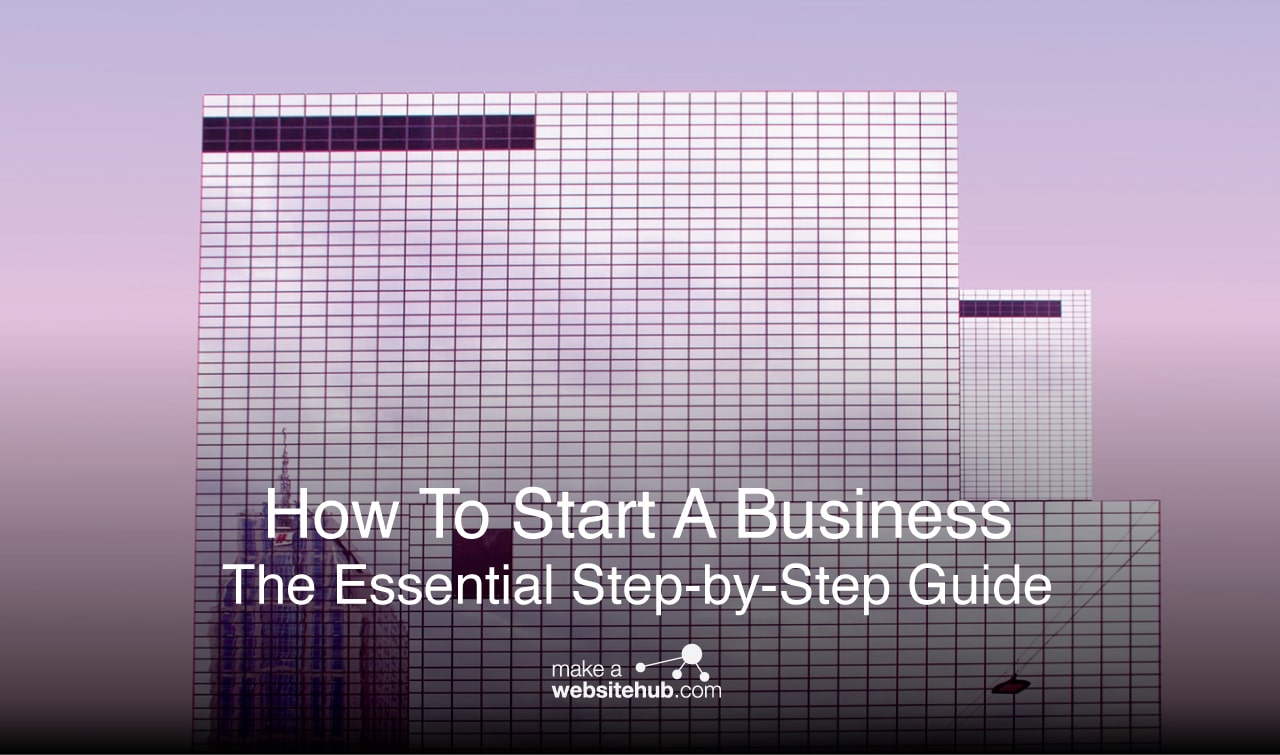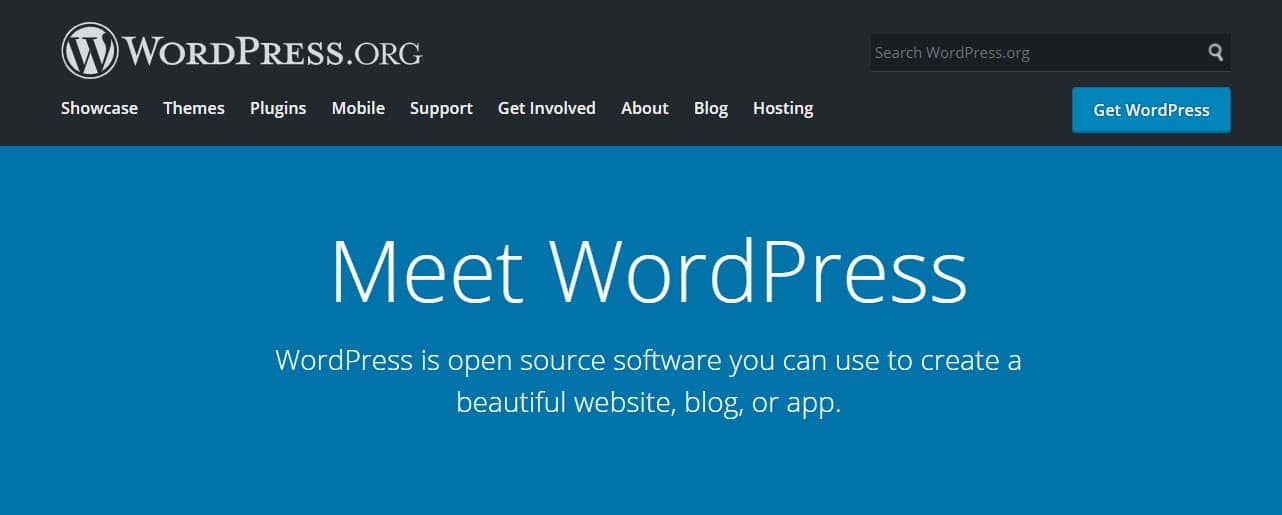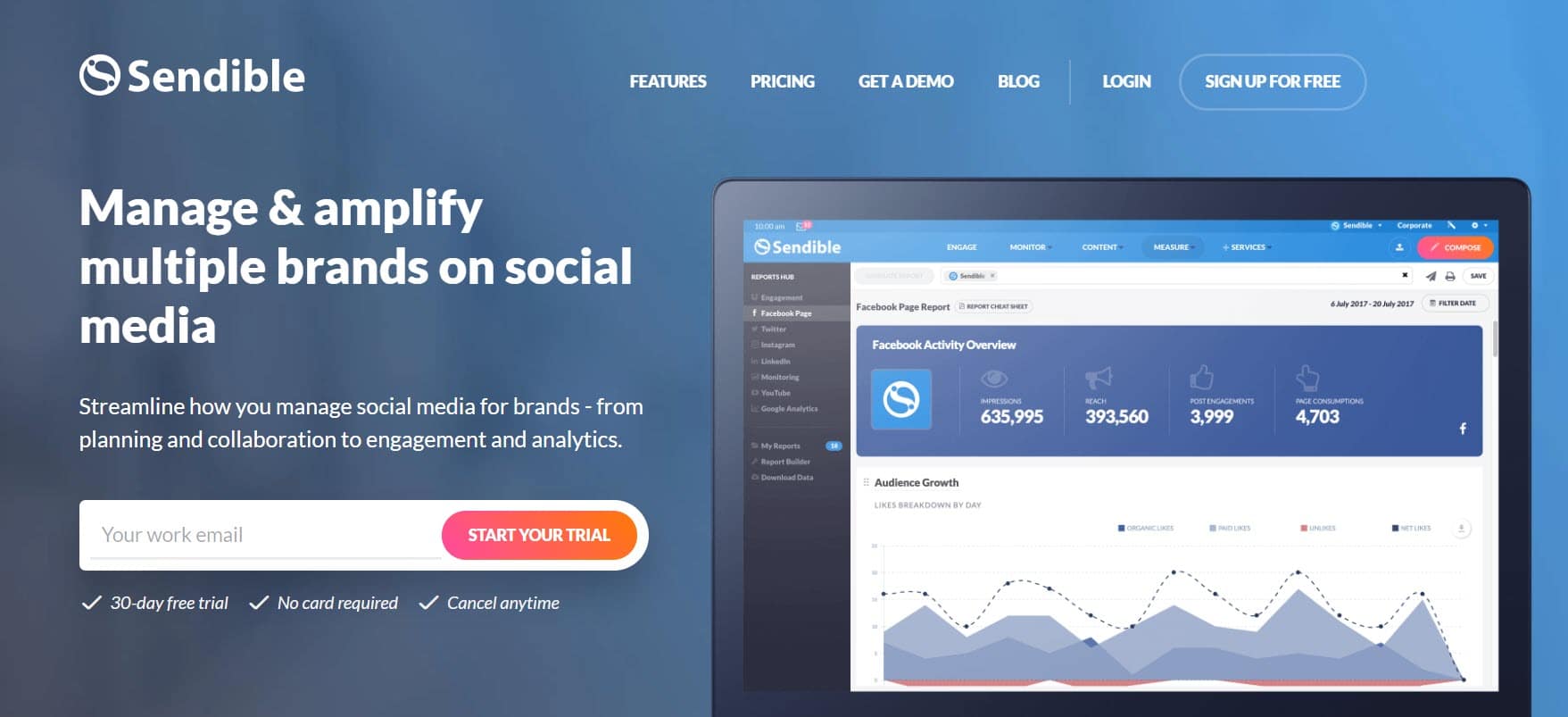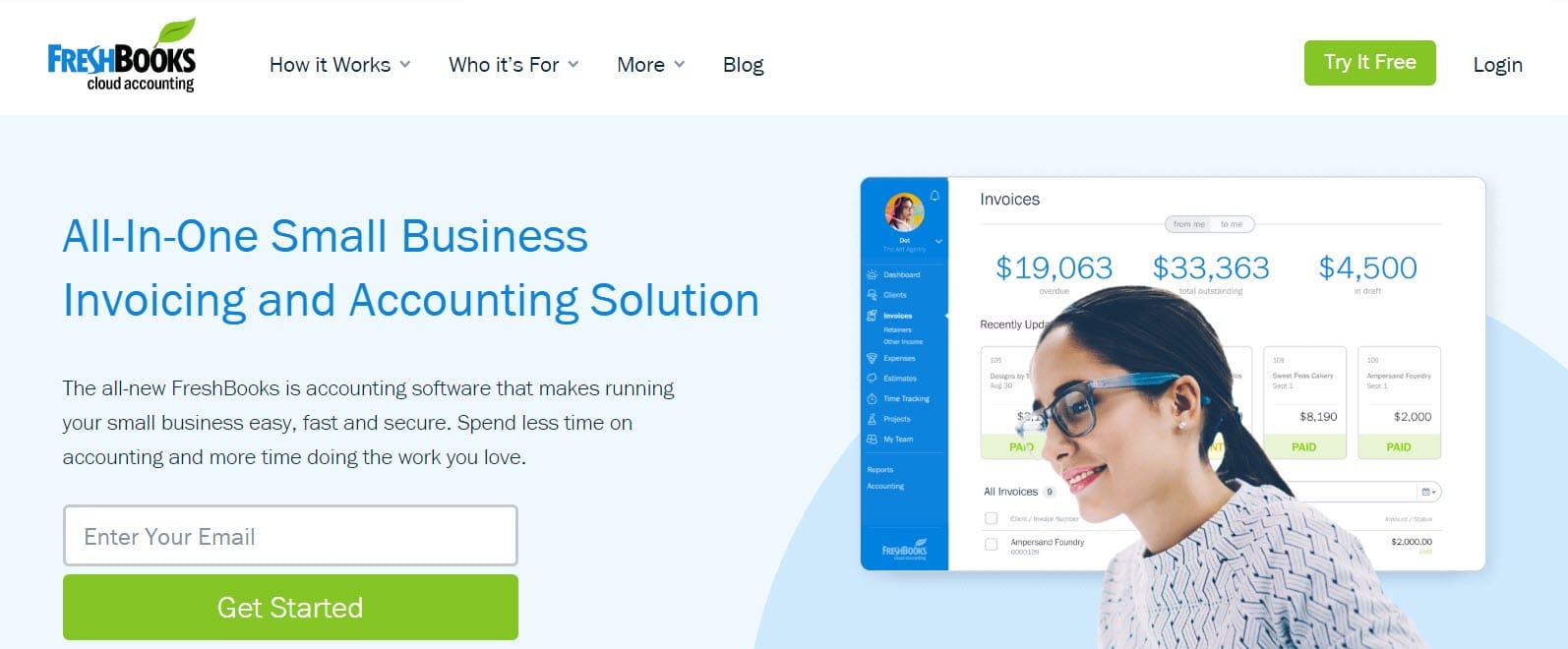How to Start a Business: The Essential Step-by-Step Guide

Now days, everyone seems to be talking about starting their own business. Thanks to the internet, creating a business, reaching your audience, and selling your products, has become a real possibility for anyone willing to put in the work. But ensuring your business is a success isn’t easy, and many entrepreneurs fail early on from lack of experience, planning, or basic understanding of their market. The struggles of entrepreneurship are real, and often stem right back to the creation of the business model, or even the core idea itself.
In this ‘How to Start a Business’ step by step guide, we run through all the steps you need to consider when setting up a new project. These include how to…
- Refine your Business Idea
- Write a Business Plan
- Organize Funding
- Register Your Business
- Create a Website
- Grow Your Online Presence
- Manage Your Finances
By the end of reading, you will have a clear idea of the steps you will need to take, the strategies you will need to implement, and the tools available to use, to help you create a profitable business. Let’s get started…
1. Refine Your Business Idea
For your business to be successful it will need to add something new to the market. Think carefully about what you are offering – are you going to provide new products or services, or will your merchandise be cheaper or in some way better than what is already available?
To help you refine your business idea, you will need to do your research. This should include…
- Researching Your Competition – You need a strong understanding of your competition, and the products that are already being sold. This will help to ensure that when you set up your business it stands out from the crowd, offering something different to what is already out there.
- Researching Your Target Market – It is crucial to understand who your customers are and what they need. Identify through quality market research what your audience may want, or the problems they may face in relation to your niche. This will help to ensure your products or services cater to your customers’ needs as well as determine if there is actually a gap in the market for your business.
- Researching Costs and Prices – Look carefully at the money side of your business before you get started. When it comes to business finances, you need a grasp of how much your products will cost to make, how much will they sell for, and how much profit will you make on each? Do you need any specific business licenses for your proposal, and how do these factor in to your costs? Crucially, you need to determine if your business has long term earning potential.
As you research your market, you can refine your business idea, altering your products or services to ensure they have unique selling points, match the needs of your customer base, and are financially feasible.
Note: Having what you consider to be a ‘great business idea’ isn’t enough – you need to be sure that your idea is viable. Doing the research at the very beginning of your business journey will ensure you don’t waste time and money on an idea that just won’t work.
2. Write a Business Plan
Whatever your business idea, whatever your niche, and however small you are thinking of starting, writing a business plan is a must. A business plan will help you to define your business model, business aims, and clearly lay out the necessary steps to help you set up and grow your business.
A business plan should provide answers to these questions…
- What is the purpose of your business?
- What are the unique selling points of your products or services?
- Who is your target market?
- Who are your competitors?
- What will your costs be? (Consider start up and ongoing costs)
- How will you finance your startup costs?
- When will your business make a profit? (Estimate revenue and profit for the first 1-5 years)
- What are your end goals?
A well-written business plan will help your business stay on track, and ensure you don’t get distracted with aspects of your company that really aren’t that important in the big scheme of things. Take your time writing your business plan and then refer to it on a regular basis – this will help to ensure your business achieves its goals.
Note: Your business plan will change and grow as your business develops, it isn’t and shouldn’t be set in stone.
3. Organize Funding
Not all businesses will need funding to get them started. Many people that start a business do so on a small scale and grow slowly over time. However, there are plenty of startups that do need an initial injection of cash to get them off the ground, especially if they want to grow quickly. (Startup costs should include all outgoings for the first year).
Depending on your business, initial start up costs may include…
- Market Research
- Branding
- Business Licence and/or Permits
- Manufacturing Equipment
- Computers and Software
- Product Inventory
- Property Lease, Rent and Utilities
- Staff Costs (as well as your own salary)
- Insurance
Many people use their own savings to start a business. However, if this isn’t an option for you, then there are a number of other ways to secure funding for your new business. Let’s take a look…
- Commercial Bank Loan – One of the most common ways for new businesses to acquire funding is through bank loans. There are numerous types of bank loans available, helping you to raise the necessary finances to get you started. From small business loans to those designed for bigger enterprises. Lenders will require you to complete a detailed business plan to be considered for a loan, another good reason to spend time on getting your business plan right.
- Government Business Loan – There are a selection of Government loans available for new and expanding businesses. These loans are guaranteed by the federal government, and can be a good choice for those struggling to get accepted for a bank loan. One such example in the USA, would be a business loan from the Small Business Administration (SBA)
- Crowdfunding – A popular way to get funding for a new start up, crowdfunding platforms such as Kickstarter will enable you to gain investment from multiple backers.
- Business Partner/Investor – Finding one or more business partners or investors, who can contribute the extra cash you need, can be a useful way to raise funds.
Using your own savings, or a personal loan or credit card, are viable alternatives. However, try exhausting the above options first, before using a private revenue stream.
Note: If you are based in the UK, then all of these options are available to you, just via UK banks and UK government start-up loans.
4. Register Your Business (and other legal requirements)
Before you can start trading you will first need to register as an official business. The legal structure and registration type you choose for your business will affect how much you pay in taxes and your personal liability, so it is important that you understand the options available. Let’s have a look at some of the most common business structures…
- Sole Proprietor – The default business type for small business owners with no employees. If you are a sole proprietor then you have complete control over your business. This is the easiest option for small new businesses, but it does come with risk as it means you are personally liable for any debts that the business incurs.
- Partnerships – If there is more than one of you in the business then a partnership may be the way to go. Like a sole proprietorship, a partnership structure can be a good way for a small business to get started – you can then register a more formal business structure as your business grows.
- Limited Liability Company (LLC) – A common choice, LLC allows business owners to pass profit through to their personal income without having to pay any corporate taxes. Owners are also not liable in most cases for any business debts, so their personal assets are safe.
- Corporations – There are a number of different corporation structures that business owners can choose from. A corporation is a legal entity, separate from its owners, and is a good option for larger businesses making good money.
Registering your business will make it a legal, and protect your brand and business name. The business structure you opt for, as well as your location, will determine how and where you need to register your business.
For most new and small businesses, registering will be as simple as registering your business in the states where you conduct your affairs. Most states will require you to register with the Secretary of State’s office, a Business Bureau, or Business Agency.
Other Legal Requirements
Other legal requirements that you may need to consider include…
- Federal Licenses and Permits – Some business activities and industries are regulated by federal agencies and may need a license or permit. Industries include agriculture, alcoholic beverages, and transport and logistics.
- State Licenses and Permits – States generally regulate more heavily than the government, but these regulations vary greatly. Always check what local government requirements are in place in the state in which you are doing business.
- Business Insurance – Insurance can help protect your company from unexpected costs, eg – accidents, natural disasters, and lawsuits.
- Employer Identification Number – If you plan on hiring employees, you will need to contact the IRS for an Employer Identification Number (EIN) in the USA. If you will be the sole proprietor you wont need this (your Social Security Number will suffice) but if you plan on scaling to include employees, if you want a business bank account and to keep business and personal taxes separate, then you will need to apply for an EIN.
Note: You will also need to get a federal tax ID number from the government, as well as a state tax ID (state dependent), which enables your business to pay state and federal tax. (We will discuss more on taxes further on in this article).
Registering a Business in the UK
If you want to start a business in the UK, you have slightly different options when it comes to setting up and registering a business. Here are the most common business structures…
- Sole Trader – This is the easiest way to register as a business. However, you will be liable for any debts your business incurs.
- Partnerships – Another simple way to register as a business, a partnership is a good option for new businesses with more than one owner. However, in the same way as a sole trader, you are liable for your business’s finances if anything goes wrong.
- Limited Company – A limited company means that the business runs as a stand alone entity, so your personal assets will be safe if your business goes bankrupt.
New businesses need to be registered with HM Revenue and Customs. You may also need a license or permit for certain business activities (eg – trading in the street). There are also certain situations where businesses are legally obliged to have insurance – if you are an employer, if you have commercial vehicles, and certain professions.
Note: For more information on registering a business in the UK, check out www.gov.uk.
5. Create a Website
Whether you have a physical business location with bricks and mortar premises, or your business is strictly online, building your online presence will be key to your success. First things first, you will need to create your website.
Although you can pay a web designer to design a website for you, this can be an expense that new businesses don’t need. Luckily, there are numerous tools and software that you can use to quickly and easily help you create a stylish and professional website for your new business.
So let’s now find out how to set up your new website…
Buy Web Hosting
The first step in the process of creating a new business website is to buy hosting. A web host will ‘host’ your website’s files and database on one of its many servers, ‘serving’ your site to your audience when they type its URL into their browser.
There are many different hosting companies, all offering a wide assortment of plans and packages. Here are a few that we recommend…
- Bluehost – Always our top pick, Bluehost provides affordable yet powerful website hosting. From fast loading times, to top security features, Bluehost will ensure that your website is kept safe and secure, whilst consistently maintaining optimal performance. Shared hosting plans start at just $2.95 a month, with features including unmetered bandwidth, a free SSL certificate, one-click WordPress install, 24/7 support, and a free domain name for one year.
Resources: Bluehost Pricing – Bluehost Review
- SiteGround – If you are setting up an eCommerce store, then you may be interested in SiteGrounds’ Managed WooCommerce hosting plans. Starting at $3.95 a month, plans include an easy WooCommerce set up, installing WooCommerce in just a few clicks along with the WooCommerce Storefront theme. You can also benefit from free Cloudflare CDN, smart WooCommerce caching, daily backups, and free pre-installed SSL.
Resources: Siteground Review
- WPEngine – If your business and customer base grows quickly, then you will soon find your website is receiving a high volume of traffic on a daily basis. At this point, it may well be worth transferring to a high end hosting company, that will ensure that your site remains fully functional, even when traffic numbers spike. WP Engine provides managed WordPress hosting, with prices starting at $35 a month. Features include a free migration service, access to 35+ StudioPress themes, premium support, global CDN, free SSL, and much more.
Note: If you choose to create a website with an all-in-one website builder solution like Wix or Constant Contact (both discussed further on), then you won’t need to purchase separate hosting as it is included in with these tool’s subscriptions.
Once you have decided on the right hosting company and plan for your project, the next step is to choose a domain name for your new site…
Choose a Domain Name
Getting your new website’s domain name right isn’t always straightforward. Ideally, you want your domain name to the same as your business’s name. However, due to the sheer number of domain names that have already been registered, this isn’t always possible.
If you are yet to settle on a name for your business, then researching domain names for your website at the same time is recommended. That way you can ensure that your business name is available with a .com extension – ie, mynewbusiness.com. (The .com extension is generally the recommended TLD for any online business).
If you have already set up your business before registering a domain, and then find that the name of your business isn’t available, you have a couple of options…
- Use a Domain Name Generator – A domain name generator will help you to find a domain name that is not yet registered. Lean Domain Search is a popular domain generator that will match your keyword or phrase (in this case it should be the name of your business) with other potential words to create a new domain name. By using Lean Domain Search, you will be able to browse and select from thousands of potential domain names, ensuring that you end up with a name that best represents your business.
- Don’t Use .com – The .com extension is the favored option for most websites, as it is widely reported that sites using this domain are more preferably ranked by Google. However, this is changing over time, with more and more TLDs being released. So if your chosen domain name using .com is taken, it may be worth considering a different extension. If your target audience is based in just one country, then using a country code TLD may be a good option – for example, .co.uk for the UK, or .fr for France). Equally, using a TLD domain that is relevant to your industry or niche can be the way to go – for example, if you own a shop or online store, you could use the extension .store. Other cool domain extensions include .ninja, .wtf, .io and many more.
Once you have decided on a domain name, you next need to register it. We recommend using Domain.com, as they are user-friendly, offer a quick check out process, and sell domains at a very reasonable price. Domain.com will check to see if your domain name is available and display the prices for all available extensions, as well as show you a selection of other alternative names. Prices start from just $2.99 for a .me TLD, $9.99 for .com, and $12.99 for .net.
Use coupon code Sitehub to get 25% off your domain purchase.
Note: Hosting providers often offer a year’s free domain name, or allow you to purchase a domain name directly with them. However, check the prices before you decide to do this – it often works out much cheaper to purchase a domain name with a third party registrar like Domain.com.
Build Your Website

Once you have registered your new domain and chosen a hosting plan, your next step is to create your website. There are many different tools and software available to help you with this task. Here are three options that we recommend…
- WordPress – This free open-source software is always our first choice for creating a website. Although WordPress does have a bit of a learning curve, once mastered this content management system will enable you to design a unique website to your exact specifications. WordPress is currently used on over 33% of the world’s top websites, and is supported by a global community of developers, designers, and enthusiasts. One of the main benefits of using WordPress are the extensive tools, products, and services that are available. So whatever customizations, alterations, or extra features and functionality you want to add to your website, it is all possible.
- Wix – An all-in-one website builder solution, Wix is another great option that will enable you to design a beautiful and fully functional website for your business. Although Wix does offer a free version of its platform, if you want to create a reputable website with all the essential features that your business will need, then you will need to subscribe to a Wix plan. (Business plans start from $23 a month, which includes hosting). The main Wix selling point is its impressive website builder, which enables you to easily create a website by simply dragging and dropping design elements around the page. Wix also comes with an extensive range of templates, built-in-features, eCommerce functionality and much more.
- Constant Contact Web Builder – Another user-friendly all-in-one website builder, Constant Contact is an ideal tool for both businesses and eCommerce stores. Unlike Wix, Constant Contact allows you to create an eCommerce store for free, and then upgrade your plan and features as your business grows. You can also use the Constant Contact AI to get a custom-designed site in minutes, without having to shoulder any of the design process yourself – perfect for beginners, or those short on time or design inspiration. Overall, Constant Contact is cheaper than Wix and provides a wider assortment of free features, including being able to connect your own domain name and setting up an eCommerce store, making it a great option for those on a budget. However, if you have the money, and are keen on using an up-market all-in-one website builder, then Wix may be a more appropriate tool.
Whether you choose to build your website with WordPress, Wix, or Constant Contact, it is important to get your site right. It needs to appeal to your target audience, be user-friendly, optimized for the search engines (SEO), and set up to convert traffic into leads and sales. A fully functioning website can be the difference between a successful business and one that fails.
6. Grow Your Online Presence
Once you have set up your website, you will next need to grow your online presence, which will ultimately help you connect with your target audience and drive traffic to your new site.
So let’s check out some strategies for growing your online presence…
Get Your Branding Right
Creating a consistent brand for your business is a must. Having clear, eye-catching branding will help your business stand out from the crowd and importantly, establish an online presence.
When branding your business, think carefully about your logo, the visuals, and colors you use on your site, and the voice of your online business. The more on-point you can be with your branding, across all areas of your business, the more likely your audience will be to recall your company over your competitors when they need your services.
Branding can be difficult to get right, especially if you are branding a business from scratch. If you are struggling to get the right style for your business, consider paying for a marketing agency to do the job for you. A good marketing specialist will be able to create a solid marketing plan, and in turn a brand that spans both the online and offline aspects of your business. And importantly, that appeals-to and connects-with your target audience.
Start a Blog
Blogging is another effective way to appeal to your target audience, as well as help your website rank in the search engines. By starting a blog or adding a blog to your website, which is regularly updated with content that is useful and relevant to your niche, you quickly build up a loyal fan base.
When blogging, always pick significant topics that are industry related – news, announcements, explanations of key issues, or how-to tutorials. By writing articles that are directly targeting key topics in your niche, you will immediately appeal to your target market, and ensure regularly returning visitors to your site.
Updating your site with dynamic blog content will also help your posts and pages rank in the search engines. This will help your content gain exposure to a wider audience and bring new potential customers into contact with your business.
Email Marketing
Building an email list is an extremely effective way to keep in contact with your customers and website visitors, as well as anyone else who has expressed an interest in your business. By sending emails to those on your mailing list, you can reconnect with the receivers, share news, promote products and services, and encourage people back to your website.
There are a wide assortment of email marketing platforms and tools available. Here are two that we recommend…
- AWeber – A leading email marketing provider, AWeber has everything you need to help you grow your mailing list and run successful email campaigns. Add responsive sign up forms to your website, create and send emails using AWeber’s drag-and-drop editor and email templates, manage and segment subscriber lists ensuring that you target the right people with the right emails, and much much more. AWeber starts at just $19 a month, for unlimited emails and up to 500 subscribers.
- Constant Contact – Another powerful marketing tool, Constant Contact has much to offer. As well as customizable pop-up forms, email templates, and a user-friendly email editor, Constant Contact also provides advanced eCommerce tools. These include automatic abandoned shopping cart emails and integration with WooCommerce, Shopify, Big Commerce, and more. This makes Constant Contact a great choice for anyone looking to set up an online store. Prices start from $20 a month for unlimited emails and up to 500 emails.
By using an email marketing provider, you can automate your emails and target specific groups of people based on their behavior on your site. This will lead to higher opt-in rates, a boost in traffic to your website, and consequently an increase in sales or conversions.
Social Media

Going off-site and using social media to gain exposure for your brand is key to successfully growing an online presence. However, social media can be time-consuming and may not reap the rewards you were hoping for unless you have a clear social strategy in place.
Sendible is a social media management tool that can help you to organize your social content, promote your new business, reach new potential customers, and much more besides. Let’s have a look at some of the features that Sendible offers…
- User-Friendly Dashboard – Manage all your social media channels from just one dashboard.
- Preview Your Posts – Personalize your posts for each social media channel and check how they look before you publish them.
- Content Strategy Calendar – Organize content creation and publishing using Sendible’s visual calendar.
- Social Listening – Track brand, competitor, and key industry terms to ensure you stay up-to-date with what is happening on all your social channels.
- Analytics – Find out how your social campaigns are performing, what is working, and what isn’t.
By having a consistent content strategy across your social media channels, that is well organized and managed, you can quickly build up your social presence and drive traffic to your website.
Online Advertising
Another effective strategy for reaching a wider audience and driving traffic to your website is to advertise online. For a new business, although advertising will cost, this is a great way to get your name out there and become known. Online advertising also allows you to target your key consumer base, boosting conversions and increasing your ROI.
To get started, we recommend Google Ads and Facebook Ads. Let’s take a look at these two options…
- Google Ads – With Google Ads, you can promote your business to people as they search for products and services related to those that you offer. This ensures your ads are targeting the right people at the right time. You can also set your ad budget, and as you only pay when someone clicks on your ad, you will find that with Google Ads a little actually goes a long way.
- Facebook Ads – If your target audience mainly hangs out on Facebook or Instagram, then you should consider utilizing Facebook Ads. Here you can target ads at people who have already visited your website or shown an interest in your social content. You can also create custom audiences, so your ads are shown to groups of people with the same interests or demographics as those who are already existing customers. This ensures that your ads are relevant to those who see them, increasing the likeliness that your adverts will achieve their objectives.
Note: It is important to track ad metrics so you understand how the ads are performing and if they are paying their way. If your ads aren’t converting against your marketing goals (eg – growing your social following, driving traffic to your website, generating leads, or selling products) then you may need to re-think the type of ad campaigns you are running.
7. Manage Your Finances
It is important that your finances are well managed from the get-go. Set up a bank account for your business and use accounting software to help you stay on track of money coming in and out of your company.
There are a number of accounting software options that will enable you to keep your finances organized. Here are two of the best…
- Freshbooks – An easy to use accountancy system, Freshbooks will not only save you time, but also take the pain out of managing finances. Perfect for new and small businesses, with Freshbooks you can send pre-designed invoices, record expenses, take payments, and much more. Prices start at $6 a month, for unlimited invoices and up to five billable clients.
- Quickbooks – This powerful accounting software will help you efficiently manage all of your finances from one intuitive dashboard. You can connect to your bank account and automatically import and categorize transactions, sync with popular apps, and photograph receipts, to name a few features. Prices start from $12 for unlimited invoices and billable clients.
Keeping on top of your accounts, and understanding what money is flowing in and out of your company, will help when it comes to filling out your tax returns.
Taxes
As mentioned earlier, when you register your business you will need to apply for a federal tax ID number, as well as a state tax ID number in certain states. (Tax obligations differ from state to state, so you will need to do your research to make sure you get it right).
Tax returns can be confusing, and if you fail to file them, there are serious consequences, including losing your business and even criminal charges. Therefore, paying an accountant to ensure that all the tax forms are present and correct may be a good option.
For more information on how to get your taxes right, check out this checklist for new businesses from the IRS.
Note: If you are based in the UK you will need to fill out HM Revenue and Customs tax forms. These will differ depending on the type of business you set up. From experience, making head or tail of UK business taxes is complicated and time consuming – if your budget will stretch to it, employ an accountant.
Final Thoughts on How to Start a Business
Evidently, there are numerous points to consider when setting up a new business. But don’t let that put you off. When you start a new business, especially transforming from idea – even a small business idea – to reality, there always going to be a sharp learning curve. However, if you are driven and dedicated, you could quickly be running a profitable and successful company. Good luck!
Any questions on how to start a business? Please feel free to ask away in the comments below…
The following two tabs change content below.



